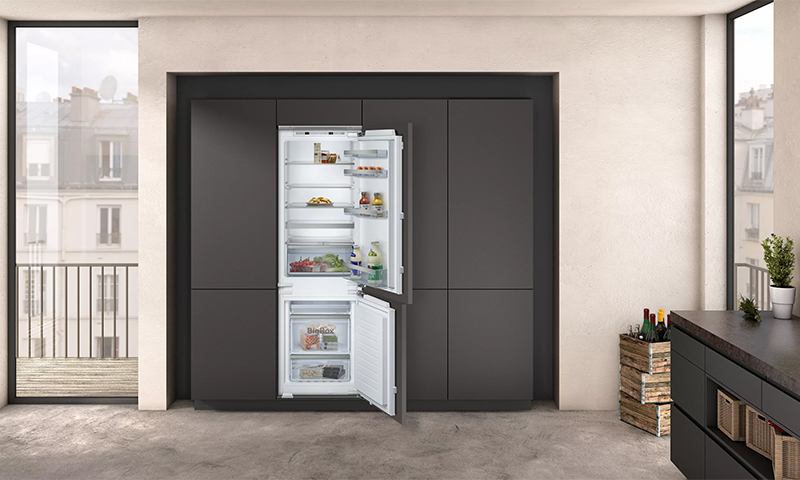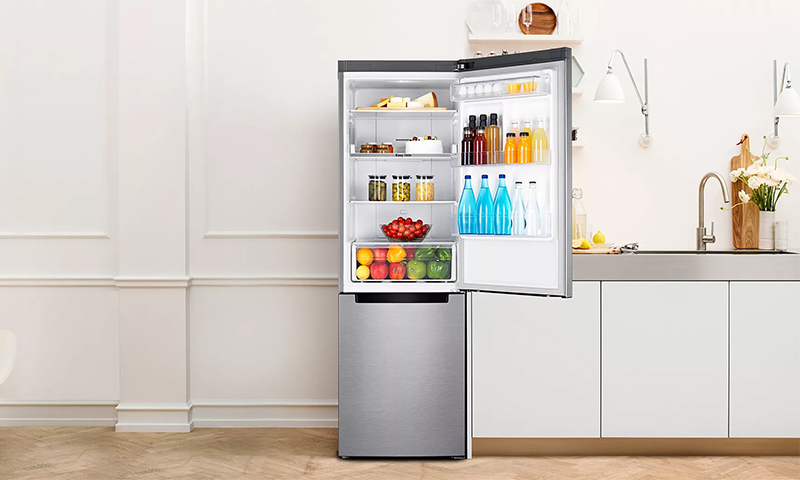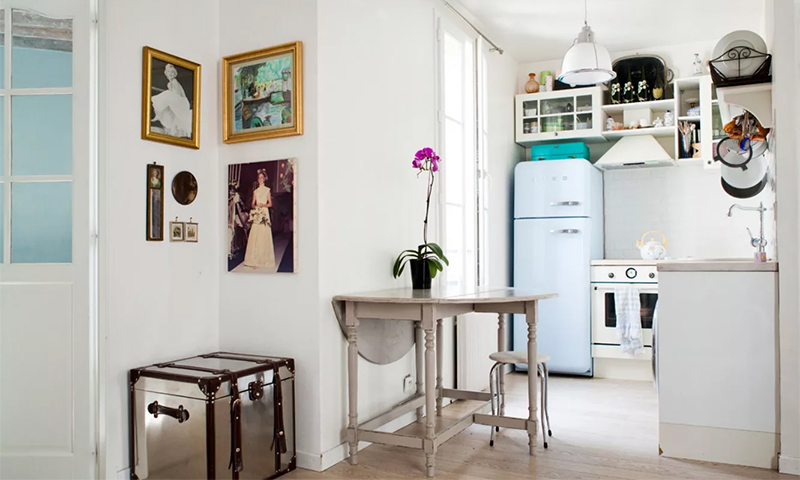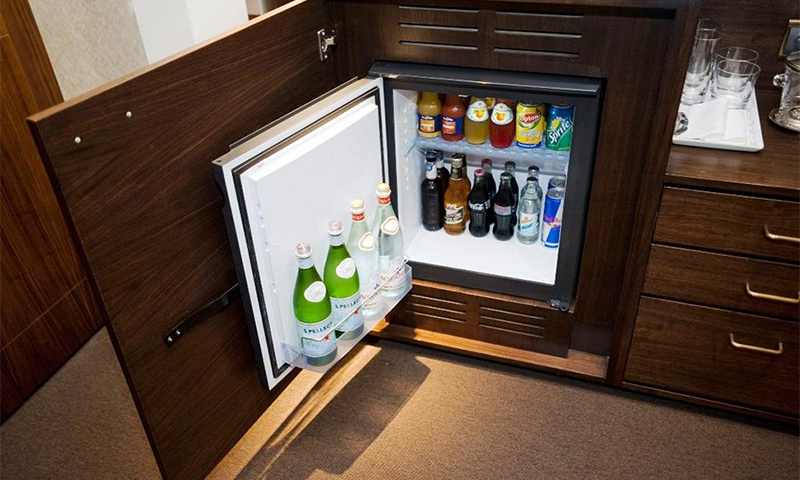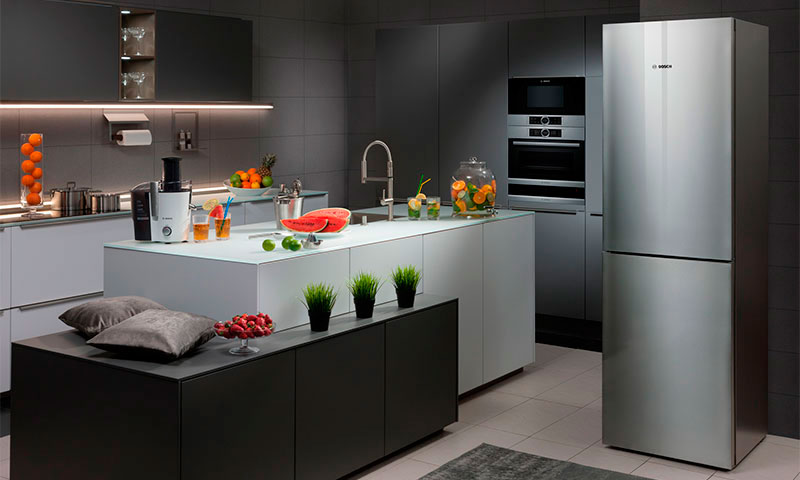Perhaps the freezer is a technique, the choice of which must be approached with particular responsibility regarding its reliability. It will be a shame if a huge batch of carefully grown crops of berries and vegetables become useless. And what will be the grief of a mushroom picker if his entire “collection” is limp! Therefore, it is important not only to collect the gifts of nature, but also to preserve them in the best possible way.

Content:
The best manufacturers of freezers - which company to choose
For refrigeration equipment, reliability is one of the most important selection criteria. It is necessary to acquire products that have proven themselves only from the best side.
We recommend to pay attention to the freezer cabinets brands:
- Liebherr;
- LG;
- Bosch;
- Kaiser;
- Ardo.
Refrigeration equipment of the following Russian manufacturers is also notable for reliability and will last for many years:
- Pozis ("Sviyaga");
- "Biryusa".
If you decide to purchase a freezer chest, you should pay attention to the products of enterprises specializing in the production of commercial refrigeration equipment, as GEL is not included in the product line of most manufacturers of household appliances.
Among them:
- Frostor;
- "Snezh."
And also freezing lari from manufacturers of household appliances:
- Liebherr;
- Hansa;
- Candy.
The advantages and disadvantages of some of the models of cabinets can be found in more detail in best freezer rating by customer reviews.
The principle of operation and installation freezer

The main elements of the freezer:
1. Compressor;
2. Evaporator;
3. Capacitor;
4. Pipeline;
5. Capillary tube.
Household freezers are equipped with an evaporator in a coil-shaped condenser. The evaporator is located inside the chamber, the condenser is located on the back wall. A refrigerant (freon) is circulated through a closed system, passing from a liquid to a gaseous state and vice versa. Freon is circulated through a compressor, which, like a pump, creates the necessary pressure in a certain part of the system.
Cooling is as follows:
1. Compressor compresses freon gas to high pressure;
2. Under pressure, the gas passes to the condenser, where it is cooled and condensed (turns into a liquid state);
3. Freon in a liquid state passes through the choke, while its pressure and temperature are reduced;
4. Liquid freon flows into the evaporator through a narrow capillary tube, while its pressure drops sharply. Freon boils, evaporates and re-enters the gaseous state. Evaporates, it absorbs heat;
5. Passing through the tubes of the evaporator, freon cools the air inside the chamber, taking heat.
Types of freezers for home
Freezer with vertical loading

The appearance of the freezer with a vertical load resembles the usual refrigerator. Manufacturers offer both compact models with a height of about 60 cm, and spacious 2-meter cabinets. Most vertical chambers have a depth and width of about 60 cm, similar to the dimensions of a refrigerator. This allows you to place the freezer even in a small kitchen.
The internal volume of the chamber is divided into several isolated sections, which are used for certain types of products, which allows you to store vegetables and fruits, meat and fish separately. Most models are equipped with drawers. There may be a sectional separation without the use of boxes - products are loaded into independent compartments with doors.
Benefits:
- Compactness - the area of the room occupied by the vertical camera is several times smaller than the area occupied by the horizontal model;
- Frontal door layout facilitates access to the internal volume;
- With the correct “species” loading, which excludes mixing of packages with berries, fish and vegetables in one compartment, the products retain their inherent odor and do not absorb extraneous flavors;
- Convenient organization of the internal space, which is divided into shelves and drawers;
- Most models are equipped with boxes of transparent plastic, which allows you to roughly get an idea of the contents of the section and the degree of its workload.
- More attractive design compared to the horizontal freezer;
- Availability of models with the No Frost system (there is no need for defrosting in order to get rid of the ice and snow cap appearing during the operation of the freezing equipment).
Disadvantages:
- Higher price;
- In the volume divided into sections, it is difficult to place dimensional packages with products (for example, large fish or meat ham);
- Equipment equipment in separate sections with boxes reduces the effective volume of the chamber;
- Significant power consumption.
Freezer with horizontal loading

Unlike vertical cameras, they are most often used for long-term storage of products. They are popular with gardeners storing berries and vegetables, mushroom pickers, hunters and fishermen. Cameras with horizontal loading (GEL) are made in the form of a rectangular box, in the upper part of which there is a lid.
Freezing lari is often used for food storage at catering establishments and in grocery supermarkets. Not every kitchen can accommodate a chest, and it will not look very harmonious in the home interior. As a rule, at home, the freezer chest is installed on the balcony or loggia, in the pantry, in the garage or in the country.
For household needs use lari from 100 to 400 liters. Many models are equipped with one or more wire baskets. If necessary, baskets can be purchased separately.
Benefits:
- They have a larger internal volume (with an equal external volume of the chest and freezer cabinet, the useful internal volume of the chest will exceed the internal volume of the freezer by about 10%);
- Consume less power;
- The lid of the chest will always fit snugly to the frame due to its own weight, so the loss of cold is minimal and does not affect the safety of products even with frequent opening;
- When opening the horizontal cover, the amount of heat leakage is less;
- When the power is turned off, the chest will keep food frozen longer than a vertical freezer.
Disadvantages:
- Low storage organization;
- Inefficient use of space;
- The inconvenience of storing food in a small package.
Built-in freezer
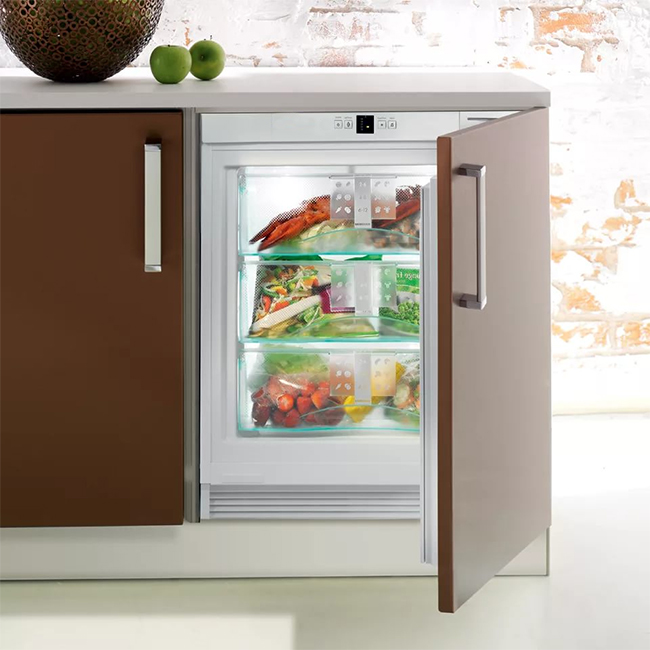
A separate camera is quite difficult to integrate into the overall kitchen design. Embedded freezers come to the rescue, which will appeal to those who are carefully working on the kitchen interior.
Manufacturers offer both small models, the volume of which is just over 60 liters, intended for installation under the tabletop, and overall 250-liter freezers.
Benefits:
- More economical because they have additional insulation of the walls;
- Less noise equipment during operation;
- Harmoniously fit into the space.
Disadvantages:
- Higher price;
- Smaller volume
Freezer with system No Frost
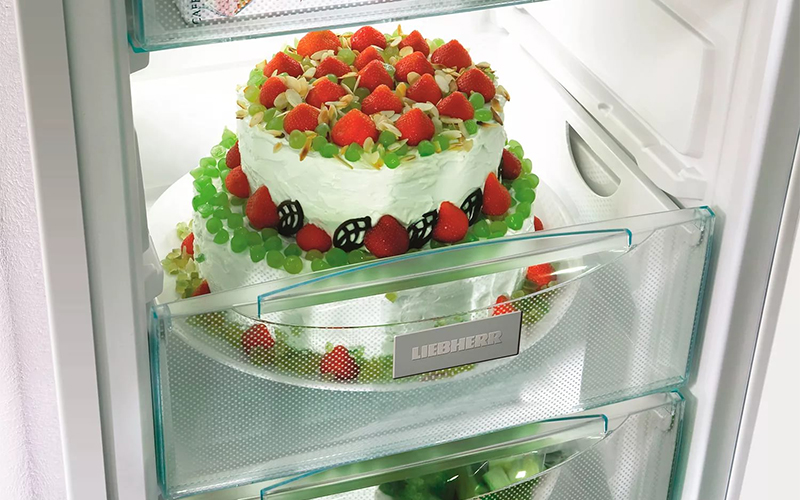
The No Frost system ("Without frost") is equipped with most of the vertical freezers. The range of chests with the No Frost system is poor.
This system involves the forced ventilation of the internal volume. The fan evenly distributes the cold air in the chamber and carries moisture to the evaporator, which is located outside the chamber.
Since moisture is the cause of frost, frost does not form inside the tank. At certain periods of time, an automatic defrosting of the evaporator occurs, during which the melt water flows into the sump and then evaporates.
Benefits:
- High cooling efficiency and uniform temperature in the internal volume on all shelves;
- There is no need to defrost the camera often (it is enough to turn off the freezer once or twice a year);
- Food packs delivered to the freezer quickly freeze and do not freeze to each other due to the temperature difference.
Disadvantages:
- Higher price;
- Increased power consumption;
- Higher noise level due to fan operation;
- Reducing the internal volume of the chamber;
- Products must be tightly packed (lack of packaging leads to dehydration of the contents).
Freezer with static cooling system
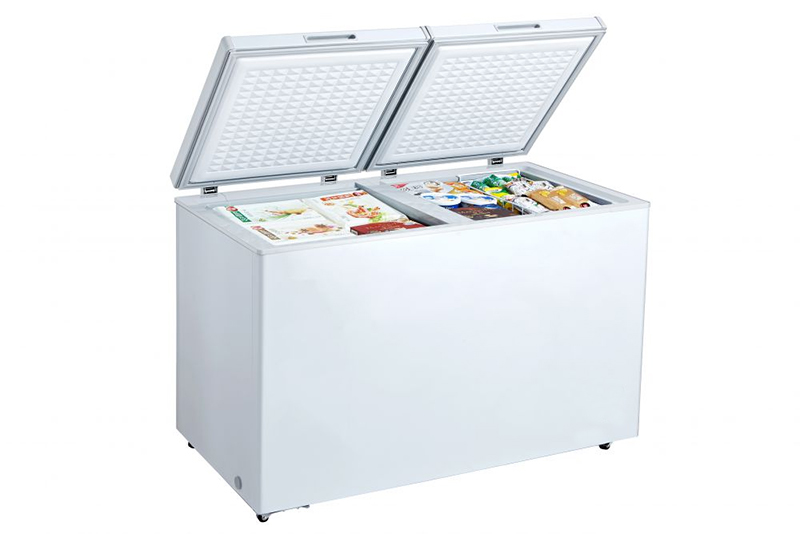
This is a traditional system used in almost all freezers and in some chambers, in which air circulation inside the chamber volume occurs naturally - warm air rises to the top, and its place is taken by cold.
After some time, frost is formed in the chamber, the cause of which is moisture, which penetrates inside when filling products, when opening the lid of the chest or the cabinet door.
Benefits:
- A simpler design improves equipment reliability;
- No special packaging requirements;
- Lower price.
Disadvantages:
- Frost is formed in the internal volume;
- The need for manual defrosting.
Freezer selection options
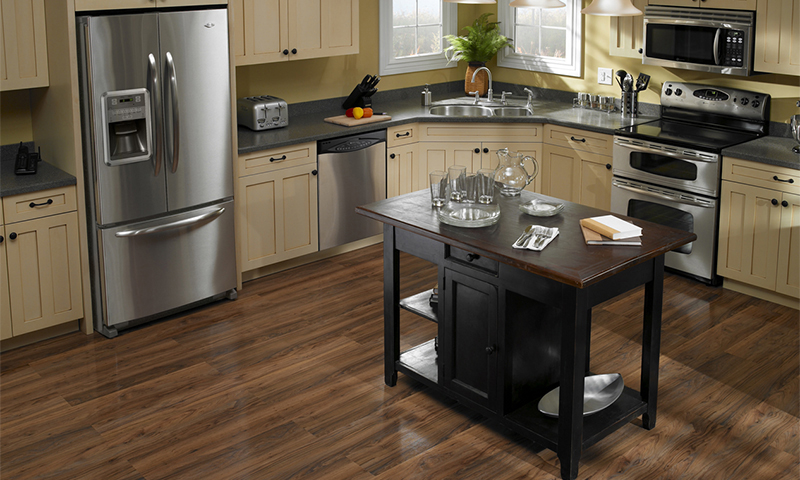
Volume
From this indicator depends on how many products can be placed in the freezer. The amount of equipment varies from 100 to 500 liters. It should be borne in mind that the larger equipment, the greater the consumption of electricity.
Freezing power
The parameter depends on the volume of the chamber and its cooling capacity, which in turn is determined by the type of compressor and the quality of the thermal insulation of the case.
Manufacturers offer equipment with a freezing capacity of 4 to 35 kg per day, with the capacity may be:
1. Minimum - from 4 to 9 kg / day;
2. The average - from 10 to 19 kg / day;
3. Maximum - from 20 to 35 kg / day.
If the products are purchased relatively rarely and in large quantities, it makes sense to purchase equipment with maximum power.
Type of defrosting
It can be carried out in two modes:
1. Manual;
2. Auto.
Equipment equipped with the No Frost system is automatically defrosted; all other freezers need manual defrosting.
Control
Management can be of three types:
1. Electronic - the most convenient way to set the exact setting. The freezer is equipped with a control indicator, a display on which you can select the appropriate mode. Electronically controlled equipment must be protected from voltage surges;
2. Electromechanical is a more reliable and easier way to control using a thermostat, but it eliminates the possibility of precise settings;
3. Mechanical - control is carried out using the rotary switches. Differs in simplicity, reliability, lower price of equipment and inability to fine-tune.
Freezing class
Some manufacturers include asterisks in the description of refrigeration equipment, which in a compressed form give information about the class of freezing, which determines the temperature and shelf life of the stored product:
1. * - up to -6 ° C, 1 week;
2. ** - up to -12 ° C, up to 4 weeks;
3. *** - up to -18 ° C, up to 3 months;
4. **** - from -24 ° C, up to 12 months.
The higher the freezing class, the better the product preserves its taste and its higher nutritional value. With a low freezing class, slow growth of ice crystals occurs, resulting in damage to the product structure.
Battery life
The parameter determines the duration of maintaining the set temperature in the chamber during a power outage, which prevents premature defrosting of stocks and their damage. Depending on the model, the battery life can vary from 7 to 45 hours.
Additional features and functions
1. Low Frost - a design feature of the evaporator, due to which temperature drops are minimized, which slows down and reduces the formation of ice;
2. Stop Frost - a system that facilitates defrosting the camera. All moisture is deposited on a special plate with high thermal conductivity, and ice is formed on it, which is easy to clean;
3. “Superfreeze” is a special mode during which the temperature drops below -24 ° C. It is used in cases when it is necessary to freeze a batch of products as quickly as possible. The mode is included for a period not exceeding one day, since it assumes uninterrupted operation of the compressor. Frequent use of the mode reduces the life of the freezer;
4. Air purification system - thanks to the carbon filters that purify the air in the chamber, frozen food does not absorb odors unusual for them;
5. Signal about a door that is not tightly closed - after a certain time, the freezer sends a signal that reminds you that the door is not tightly closed;
6. The possibility of re-hanging the door - some models provide for re-hanging the door to the opposite side, which makes it more comfortable to use the freezer.
What freezer for the house to choose
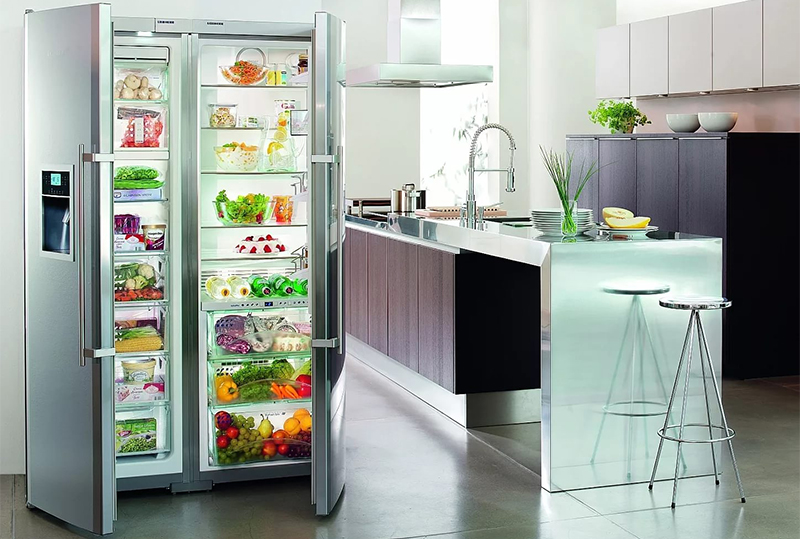
1. The usual average family for storing semi-finished products, small stocks of berries and vegetables can be purchased freezer volume of 150-200 liters;
2. Amateur gardeners and mushroom pickers who prepare stocks of mushrooms, vegetables and berries can use the freezer with a capacity of about 300 liters;
3. For a family of 3-4 people, you can purchase a freezer with a freezing capacity of 6-12 kg per day;
4. Fishermen and hunters, large dog breeders will find it convenient to use a 250-300 liter freezer chest, it is convenient to store meat and fish in it;
5. Those who strive to create the most harmonious interior in the kitchen will be satisfied with a small built-in freezer that can be placed under the worktop or a large-sized built-in model if it is intended to store significant stocks.
How much does the freezer cost

1. Compact models with a volume of up to 100 liters can be purchased at a price of 10 thousand rubles;
2. A freezer cabinet, the dimensions of which are similar to a refrigerator, costs from 25 thousand rubles;
3. For a small freezer chest with a volume of 200 liters will have to pay from 17 thousand rubles;
4. A chest with a capacity of about 500 liters will cost from 25 thousand rubles;
5. A small freezer that can be built in under the countertop can be purchased at a price of 18 thousand rubles;
6. For an impressive built-in freezer with a volume of about 300 liters will have to pay from 67 thousand rubles.
It will be interesting to friends too


